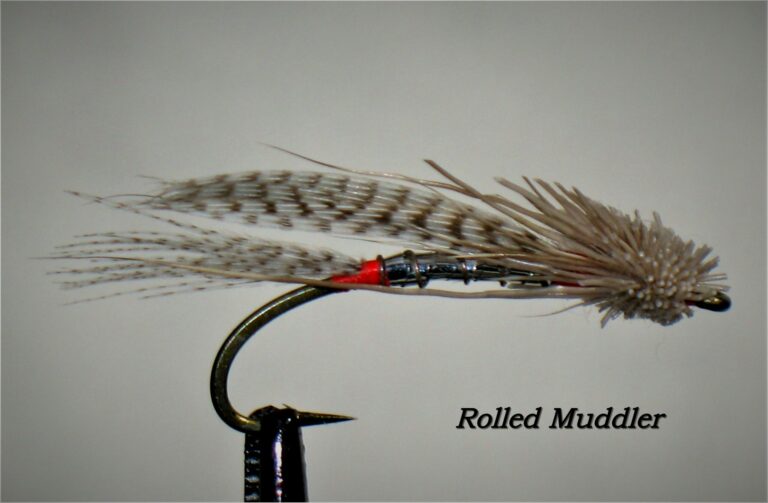

“The “Rolled Muddler” is one of those flies that evolved because I was looking for a pattern that imitated our local saltwater beach stickleback. The fish is quite small, about one to one-and-a- half inches in length, has a silver-white belly, speckled sides and a greenish blue to brown back. The natural mallard flank feather was chosen for a wing because, after trial and error, it was consistently the most successful. A coloured wing on the fly such as blue, green or brown just did not get as many hits.
Because size was critical and I was retrieving just sub-surface, the best hook choice was the Mustad # 9671 size 12 streamer hook. It isn’t too small to miss a strike and it isn’t so big that it is difficult to remove from a fish. Because the “cuts” look up at the fly as they do most food near the surface, I concentrated on getting a shape that fished well and didn’t roll or bellow out as some streamers and bucktails do. To get the stiffness and outline I wanted, I folded or “rolled” the natural flank feather for the wing and tail. Silver mylar was the answer for the body.
I added a reverse rib to hold it all together and I had the basic pattern. I wanted a flat-sided, bullet-shaped head and this was achieved by using spun hair and trimming it. By using red tying thread, I could get a little gill colour by trimming the hair to the hook shank on the bottom. By leaving three or four longer hair strands along the body, I got the lateral line. It is not difficult to tie, but I like my flies sparse, and I often go back and reclip until I feel the fly looks right. It was an instant success for me and has been responsible for many of the best days I’ve had cutthroat fishing. The retrieve I use when fishing this fly is very important.
When I saw those stickleback darting in the six to ten inch movements that are characteristic of this bait fish and started retrieving with a quick wrist action that I thought imitated the fish, I had my system.”
